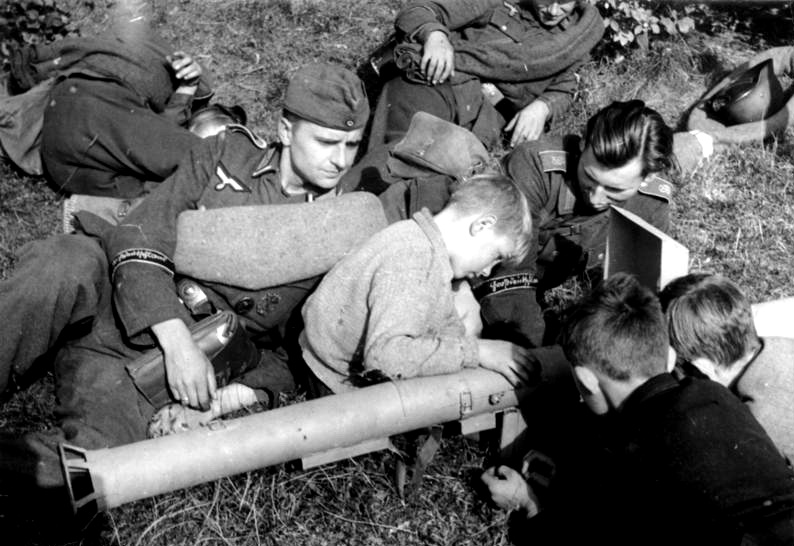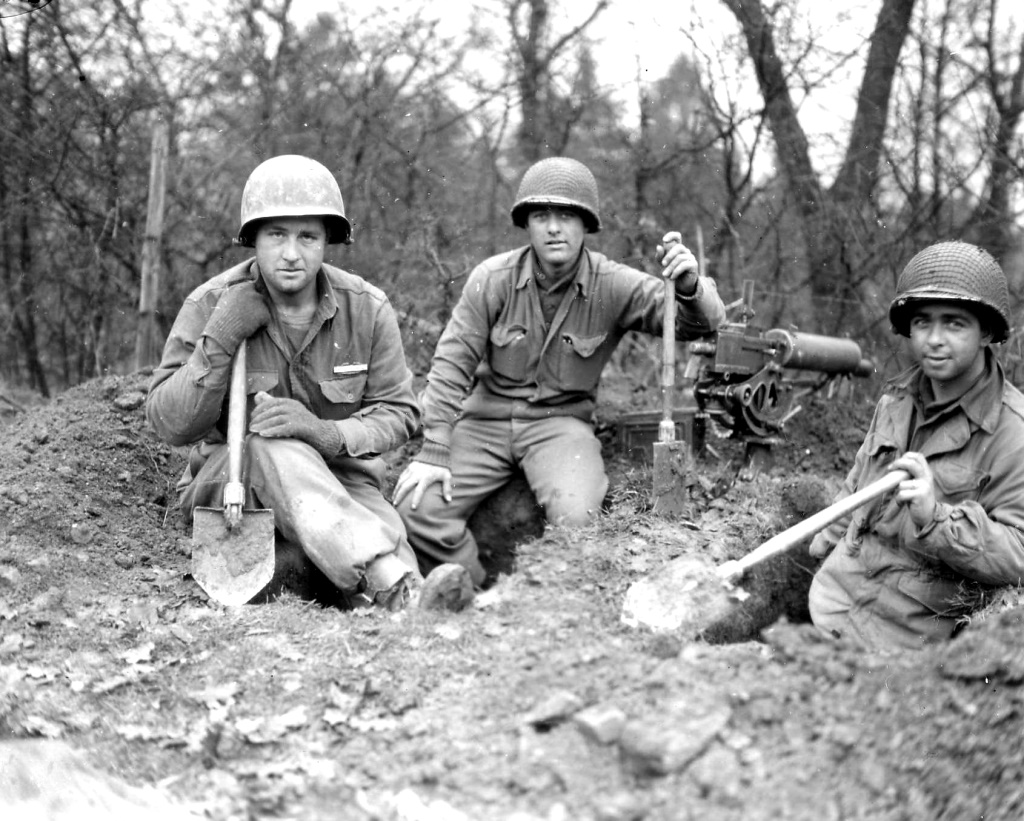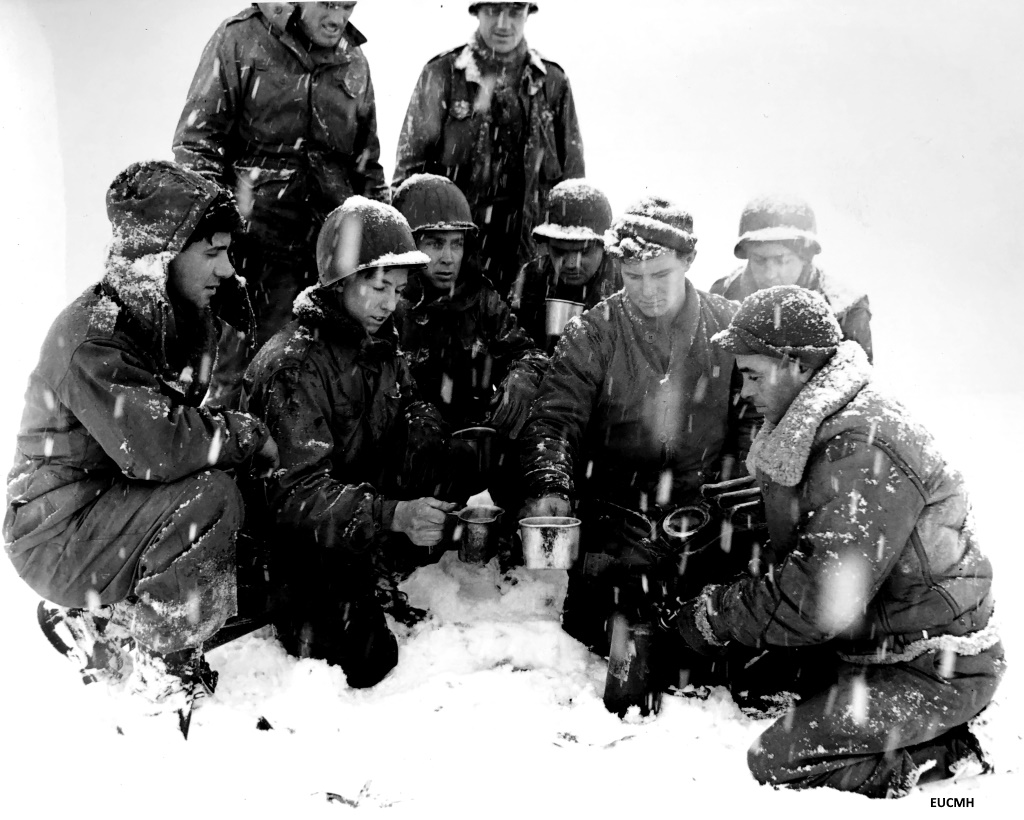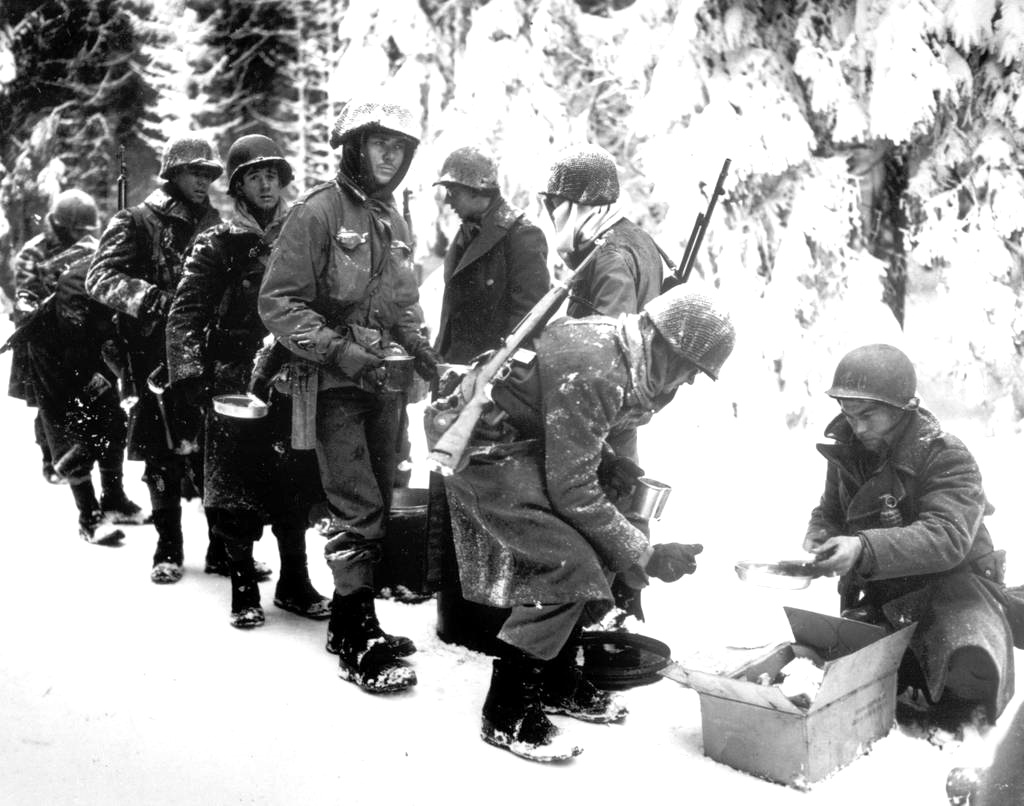Hitler’s Generals were not yet ready on the tentative date of November 25. Fighting in the Roer River area had made it impossible to withdraw some of the earmarked divisions in time for refitting. Hitler reluctantly consented to postponement to December 10. When that date arrived he again agreed to another postponement to December 16, since weather forecasts predicted that the weather conditions would be more favorable on that date. Branderberger’s 7.A was already in position holding that part of the line but Manteuffel’s 5.PA and Dietrich 6.PA began closing into their assembly areas in the wooded terrain behind the West Wall. Extreme precautions were taken to preserve secrecy and, finally, on the evening of December 15, they moved to their final assembly areas from which they would jump off the next morning.
Facing the West Wall the American troops were blissfully unaware of the impending blow. The Army Intelligence had succeeded in gathering sufficient evidence to support the assumption of an impending attack. The buildup of the 6.PA had been reported and the movement of the 5.PA to Koblenz opposite the Ardennes was known as the southward shift of the 15.A. Captured Germans reported that an attack was planned. Allied air reconnaissance reported a troop buildup in the Koblenz area in November. A German woman reported to VIII Corps on December 14, the presence of large quantities of bridging equipment in the same area, a sure indication of offensive plans. While possessing sufficient information, the interpretation of its true meaning was in error. The use of the code name ‘Wacht Am Rhein’ led the German Army personnel to believe that the plans were defensive in character and this belief was transmitted to the Allied Intelligence officers by the captured German soldiers. In any event, while they realized the possibility of an attack they believed it would come in the Aachen Sector, seeking at most to recapture the city as a Christmas gift to ‘Der Fuehrer’. The area in which the attack was made, and its enormity came as a complete surprise to the Allied High Command.
The Schnee Eifel is a heavily wooded landscape in Germany’s Central Uplands, up to 699 M above sea level that forms part of the Western Eifel in the area of the German-Belgian Border. The name may have been derived in the 19th century from the Schneifel chain of hills which had nothing to do with snow (Schnee), but with the name for a forest swathe (Schneise). The Schnee Eifel natural region is formed by the southern part of the Belgian Hohes Venn (Eifel Nature Park). To the north it is bounded by the Kyll River, the border with the North Eifel, which begins near Hallschlag and Kronenburg with the Zitter Forest; To the east, the Kyll forms the boundary river with the High Eifel. To the south, the Schnee Eifel merges into the South Eifel to Pronsfeld in the Prüm Area. Its highest elevation is found on the Schneifel ridge, 697.3 M (2288 ft) high at the Schwarzer Mann (Black Man). The term Schneifel is frequently employed in publications to mean the whole Schnee Eifel region, but they are not synonymous. The Schneifel is actually the uninhabited central chain of hills in the Schnee Eifel; whose coverage goes beyond the narrow definition of the Schneifel and includes the southern source region of the Kyll and its upper reaches as well as the adjoining Prüm Forest southeast of the main crest.
The largest town in the Schnee Eifel is Prüm which lies on the Prüm River. The Schwarze Mann and the Wolfsschlucht high areas lay about 15 KM (9.3 mi) northwest and 5 KM (3.1 mi) north of Prüm respectively. Much of the Eifel belongs to the Rhine Massif. The Schnee Eifel, and in particular, the Schneifel, its highest region, is a truncated upland, the stumps of once great mountains that were formed by Hercynian folding during the Devonian period of geological history. After a long period of severe erosion, they uplifted again in the Quaternary period. Scattered areas of old rock with smooth relief still exist, although at times they are hard to discern. Rougher highlands stand out from this base, especially in the north (Prüm Area), owing to the hardness of their rocks, like the quartzite ridge of the Schneifel. This long, sinewy ridge juts out above the less jagged, old plateau by around 100 M and is clear evidence of the resistance of the local quartz rock to the forces of weathering. It is remarkable for its length of 15 KM (9.3 mi) against an average width of just 2 KM (1.2 mi). With little variation in height, it runs from Brandscheid as far as Ormont near Stadtkyll, where it ends at the Steinberg (654 M).
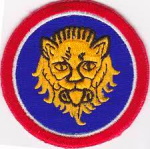
 On this part of Schnee Eifel is a high, rugged and wooded ridge extending in a northeasterly direction from the vicinity Bleialf to Ormont, a distance of roughly ten miles. On the ridge lay two regiments of the 106th Infantry Division, the 422-IR and the 423-IR. The remaining regiment, the 424-IR lay just to the south, while in the north the 14th Cavalry Group held the line northward to maintain contact with the 99-ID. Either end of the Schnee Eifel offers routes of approach to the important rail and highway center of St Vith. The north end offers an approach to the Elsenborn Ridge, vital to the attacking Germans, to provide roads and maneuver space and as an anchor point upon which to build the defense against interference from the north. At 0530 on December 16, the Germans opened with a heavy artillery barrage all along the Ardennes from the vicinity of Mutzenich, north of Monschau in the US V Corps sector, to Echternach near the south flank of the VIII Corps. Directed at first on the front line elements after two hours it was shifted to rear area installations.
On this part of Schnee Eifel is a high, rugged and wooded ridge extending in a northeasterly direction from the vicinity Bleialf to Ormont, a distance of roughly ten miles. On the ridge lay two regiments of the 106th Infantry Division, the 422-IR and the 423-IR. The remaining regiment, the 424-IR lay just to the south, while in the north the 14th Cavalry Group held the line northward to maintain contact with the 99-ID. Either end of the Schnee Eifel offers routes of approach to the important rail and highway center of St Vith. The north end offers an approach to the Elsenborn Ridge, vital to the attacking Germans, to provide roads and maneuver space and as an anchor point upon which to build the defense against interference from the north. At 0530 on December 16, the Germans opened with a heavy artillery barrage all along the Ardennes from the vicinity of Mutzenich, north of Monschau in the US V Corps sector, to Echternach near the south flank of the VIII Corps. Directed at first on the front line elements after two hours it was shifted to rear area installations.

 At 0700, Mateuffel’s LXVI Corps, with two infantry divisions, one on each end of the Schnee Eifel started moving up through the American lines. At 0730, the attack further north by Dietrich’s I SS-Panzer-Corps composed of the 1.SS-Panzer-Division (LSSAH) and 12.SS-Panzer-Division (Hitlerjugend) began the attack, the 1.SS-PD toward Büllingen, the 12.SS-PD toward Monschau. North of Monschau, the LXVII Corps executed a frontal attack against the 2nd Infantry Division and the 99th Infantry Division in an attempt to gain the northern slopes of the ridge in Elsenborn. The 2-ID and the 99-ID, attacking toward the Roer River were not prepared for defense. Badly shaken they continued to hold through December 16, and on the afternoon of December 17, permitted their lines to be sent back to the southern slopes of the ridge in Elsenborn. Here they were to hold until the threat was eliminated, and their line provided the base upon which the US 1-A was to build its defense to contain the Germans and later to counterattack.
At 0700, Mateuffel’s LXVI Corps, with two infantry divisions, one on each end of the Schnee Eifel started moving up through the American lines. At 0730, the attack further north by Dietrich’s I SS-Panzer-Corps composed of the 1.SS-Panzer-Division (LSSAH) and 12.SS-Panzer-Division (Hitlerjugend) began the attack, the 1.SS-PD toward Büllingen, the 12.SS-PD toward Monschau. North of Monschau, the LXVII Corps executed a frontal attack against the 2nd Infantry Division and the 99th Infantry Division in an attempt to gain the northern slopes of the ridge in Elsenborn. The 2-ID and the 99-ID, attacking toward the Roer River were not prepared for defense. Badly shaken they continued to hold through December 16, and on the afternoon of December 17, permitted their lines to be sent back to the southern slopes of the ridge in Elsenborn. Here they were to hold until the threat was eliminated, and their line provided the base upon which the US 1-A was to build its defense to contain the Germans and later to counterattack.
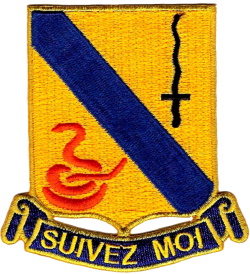
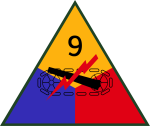 The 14th Cavalry Group had given way under the pressure of the I SS-Panzer-Corps and the area extending from the Schnee Eifel to Elsenborn was lost. By the evening of December 17, a gap of 9 miles existed. Through this gap the 1.SS-Panzer-Division poured en route to Stavelot. The divisions encircling the Schnee Eifel joined at Schoenberg by mid-morning of December 17 and were advancing on St Vith. Gen Troy Middleton, realizing the threat to St Vith on December 16, had obtained the release of
The 14th Cavalry Group had given way under the pressure of the I SS-Panzer-Corps and the area extending from the Schnee Eifel to Elsenborn was lost. By the evening of December 17, a gap of 9 miles existed. Through this gap the 1.SS-Panzer-Division poured en route to Stavelot. The divisions encircling the Schnee Eifel joined at Schoenberg by mid-morning of December 17 and were advancing on St Vith. Gen Troy Middleton, realizing the threat to St Vith on December 16, had obtained the release of 
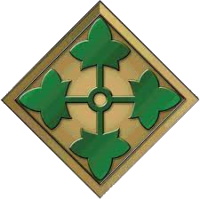 CCB of the 9-AD from the US VII Corps and assigned it to the defense of that vital rail and highway center. Farther to the south, in the 28-ID sector, Manteuffel’s two Panzer Corps, the LVIII and the XLVII, using both infantry and tanks in the initial assault had driven the division back three miles. On December 17, the attack arrived at the ridge west of the Our River and cut the main north and south highway west of Marburg. In the sector of the 4-ID on the US VIII Corps’ south flank the German
CCB of the 9-AD from the US VII Corps and assigned it to the defense of that vital rail and highway center. Farther to the south, in the 28-ID sector, Manteuffel’s two Panzer Corps, the LVIII and the XLVII, using both infantry and tanks in the initial assault had driven the division back three miles. On December 17, the attack arrived at the ridge west of the Our River and cut the main north and south highway west of Marburg. In the sector of the 4-ID on the US VIII Corps’ south flank the German  7.A struck early on December 16. Looking at the mobility of the armies in the north, Brandenberger could not move so fast. The 4-ID with CCA of the 7-AD succeeded in falling back across the Sauer River, facing north. Though subjected to heavy attacks the line was maintained and was to later form the anchor upon which the US 3-A was to group its forces for the counterattack.
7.A struck early on December 16. Looking at the mobility of the armies in the north, Brandenberger could not move so fast. The 4-ID with CCA of the 7-AD succeeded in falling back across the Sauer River, facing north. Though subjected to heavy attacks the line was maintained and was to later form the anchor upon which the US 3-A was to group its forces for the counterattack.

 When word of the attack reached Gen Eisenhower and Bradley, they wore in conference seeking a solution to the reinforcement problem. While not yet cognizant of the strength of the attack both were fully aware of the weakness of the defense in that area. Gen Elsenhower suggested to Gen Bradley that available armor be dispatched to the scene. Consequently, the 10-AD, waiting to
When word of the attack reached Gen Eisenhower and Bradley, they wore in conference seeking a solution to the reinforcement problem. While not yet cognizant of the strength of the attack both were fully aware of the weakness of the defense in that area. Gen Elsenhower suggested to Gen Bradley that available armor be dispatched to the scene. Consequently, the 10-AD, waiting to 
 participate in the offensive across the Saar River scheduled to open on December 19, was moved northward to reinforce the 4-ID. The 7-AD in the US 9-A reserve was released to the VIII Corp and dispatched to St Vith, where the first Combat Command was to arrive on the afternoon of December 17.
participate in the offensive across the Saar River scheduled to open on December 19, was moved northward to reinforce the 4-ID. The 7-AD in the US 9-A reserve was released to the VIII Corp and dispatched to St Vith, where the first Combat Command was to arrive on the afternoon of December 17.
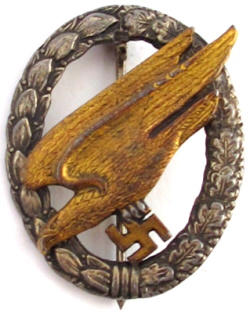
 The German Fallschirmjaeger drop in the vicinity of Eupen resulted in total tactical failure. Scheduled for the early hours of December 16, bad weather forced postponement until 2400 hours that day. Inexperienced in the night drop the air force scattered the parachutists over a large area; some were dropped as far as Bonn, Düren, Aachen, Verviers and even almost in Liège. Only a few hundred met at the rendezvous (Crossroads Belle Croix) and they were ineffectual. The promised support failed to arrive, the men were almost rounded up by units of the US 1-A and the US 9-A and they had to rejoin friendly lines in Germany by foot. The psychological effect was great, however. Allied troops in large numbers were diverted to hunting reported parachutists, while one combat command of the 3-AD was held in the vicinity of Eupen in
The German Fallschirmjaeger drop in the vicinity of Eupen resulted in total tactical failure. Scheduled for the early hours of December 16, bad weather forced postponement until 2400 hours that day. Inexperienced in the night drop the air force scattered the parachutists over a large area; some were dropped as far as Bonn, Düren, Aachen, Verviers and even almost in Liège. Only a few hundred met at the rendezvous (Crossroads Belle Croix) and they were ineffectual. The promised support failed to arrive, the men were almost rounded up by units of the US 1-A and the US 9-A and they had to rejoin friendly lines in Germany by foot. The psychological effect was great, however. Allied troops in large numbers were diverted to hunting reported parachutists, while one combat command of the 3-AD was held in the vicinity of Eupen in 
 anti-airborne defense when it was urgently needed in the fight against the armored elements used in the attack. By the evening of December 17, two gaps had been made through the American lines. The approach over the ridge north of the Schnee Eifel, nine miles in width was open and the 1.SS-PD (LSSAH) was moving through. The southern gap, in the 28-ID sector, was 10 to 12 miles wide and moved through it was moving three armored and two infantry divisions.
anti-airborne defense when it was urgently needed in the fight against the armored elements used in the attack. By the evening of December 17, two gaps had been made through the American lines. The approach over the ridge north of the Schnee Eifel, nine miles in width was open and the 1.SS-PD (LSSAH) was moving through. The southern gap, in the 28-ID sector, was 10 to 12 miles wide and moved through it was moving three armored and two infantry divisions.

 The strength of the attack had become more apparent by midday on December 17. It was evident that a major problem in containment faced the Allied forces. The only theatre reserve available to SHAEF were the two airborne divisions, the 82nd, and the 101st. In training areas near Rheims, France, recuperating from Operation Market Garden in Holland in September, they were being prepared for a mission, Operation Varsity, in the projected Rhine crossing. Refitting was incomplete. Many of the officers and men were absent on leave or other duties. It was decided to commit them, however, and they were ordered to close into assembly areas in the vicinity of Bastogne, Belgium, where a good road net provided routes for movement to threatened spots as the necessity arose. The 82-A/B was dispatched first. En route to Bastogne its destination was changed to Werbomont since leading elements of the 1.SS-PD were moving westward along the Amblève River toward that town. The 101-A/B, dispatched in the late afternoon of December 18, proceeded to Bastogne.
The strength of the attack had become more apparent by midday on December 17. It was evident that a major problem in containment faced the Allied forces. The only theatre reserve available to SHAEF were the two airborne divisions, the 82nd, and the 101st. In training areas near Rheims, France, recuperating from Operation Market Garden in Holland in September, they were being prepared for a mission, Operation Varsity, in the projected Rhine crossing. Refitting was incomplete. Many of the officers and men were absent on leave or other duties. It was decided to commit them, however, and they were ordered to close into assembly areas in the vicinity of Bastogne, Belgium, where a good road net provided routes for movement to threatened spots as the necessity arose. The 82-A/B was dispatched first. En route to Bastogne its destination was changed to Werbomont since leading elements of the 1.SS-PD were moving westward along the Amblève River toward that town. The 101-A/B, dispatched in the late afternoon of December 18, proceeded to Bastogne.

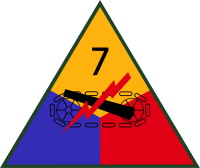 On December 18, the penetrations were extended. In the zone of the 28-ID, the Reserve Command of the 7-AD which had been committed in an attempt to stem the tide continued withdrawing toward Bastogne. The 110-IR, in the zone of the 28-ID, had been overrun. The 112-IR was withdrawing toward St Vith, as was the 424-IR (106-ID). The gap now extended from the vicinity of Monschau on the north to Echternach on the south with the exception of the 422-IR and the 423-IR (106-ID) which
On December 18, the penetrations were extended. In the zone of the 28-ID, the Reserve Command of the 7-AD which had been committed in an attempt to stem the tide continued withdrawing toward Bastogne. The 110-IR, in the zone of the 28-ID, had been overrun. The 112-IR was withdrawing toward St Vith, as was the 424-IR (106-ID). The gap now extended from the vicinity of Monschau on the north to Echternach on the south with the exception of the 422-IR and the 423-IR (106-ID) which 
 continued to hold out in their respective areas of the Schnee Eifel. The 1-ID, which began moving in to extend the 2-ID and the 99-ID line on the Elsenborn Ridge, on December 17, was in position and repulsed a heavy attack on December 18.
continued to hold out in their respective areas of the Schnee Eifel. The 1-ID, which began moving in to extend the 2-ID and the 99-ID line on the Elsenborn Ridge, on December 17, was in position and repulsed a heavy attack on December 18.
The 12.SS-PD continued its attack to open the gap into the ridge and clear the way for the II.SS-Panzer-Corps which was waiting in 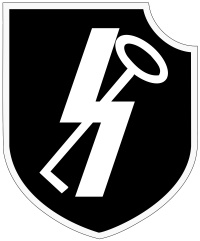
 an assembly area in the vicinity of Schleiden. The 1.SS-PD continued westward. Bypassing Malmedy the column continued on to Stavelot by way of Ligneuville. There, it forced a crossing over the Amblève River and continued westward to Trois Ponts.
an assembly area in the vicinity of Schleiden. The 1.SS-PD continued westward. Bypassing Malmedy the column continued on to Stavelot by way of Ligneuville. There, it forced a crossing over the Amblève River and continued westward to Trois Ponts.
Attempting to cross the Salm River there, the leading elements were stopped by a company of the 51st Engineers Combat Battalion, who blew the bridge. Lacking bridging equipment, the column then turned north and headed up the valley on the north side of the river. Finding another bridge to the west across the Ambleve River, the column headed west again toward Werbomont. Here again, a company of engineers from the 291st Engineers Combat Battalion delayed his leading tanks and blew another bridge. Turning north again, the column was heavily bombed by a flight of P-47s and it halted south of Stoumont for the night.

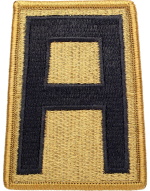 The 30th Infantry Division was assigned to the US 1-A on December 17. It began moving into position to extend the line west from Malmedy. The flight of P-47s had reported the location of the 1.SS-PD leading elements and in order to blook their westward movement the 119-IR was dispatched in a circling movement to Werbomont and Stoumont. The line on the north now extended from Butgenbach through Malmedy to Stavelot. A reorganization of the US 1-A now
The 30th Infantry Division was assigned to the US 1-A on December 17. It began moving into position to extend the line west from Malmedy. The flight of P-47s had reported the location of the 1.SS-PD leading elements and in order to blook their westward movement the 119-IR was dispatched in a circling movement to Werbomont and Stoumont. The line on the north now extended from Butgenbach through Malmedy to Stavelot. A reorganization of the US 1-A now 
 placed the VII Corps facing south and southeast. The VII Corps’ boundary was shifted south to include Konzen and to exclude Eupen. The V Corps east boundary ran generally on a line from Malmedy to Verviers.
placed the VII Corps facing south and southeast. The VII Corps’ boundary was shifted south to include Konzen and to exclude Eupen. The V Corps east boundary ran generally on a line from Malmedy to Verviers.

 Attacks continued on the north flank on December 19. The 12.SS-PD moved westward and attacked to the north toward Malmedy. This attack also failed. The Germans now began reinforcing the assaulting corps on the north flank. The 2.SS-PD Panzer Division was ordered south around St Vith which was still held by elements of the 9-AD, 7-AD, 106-ID and attached
Attacks continued on the north flank on December 19. The 12.SS-PD moved westward and attacked to the north toward Malmedy. This attack also failed. The Germans now began reinforcing the assaulting corps on the north flank. The 2.SS-PD Panzer Division was ordered south around St Vith which was still held by elements of the 9-AD, 7-AD, 106-ID and attached

 troops. The 9.SS-PD and 16.PDG was dispatched westward to join the 12.SS-PD on the assault on the north shoulder. The 3.PD reinforced the frontal attack units facing the Ridge in Elsenborn. The pattern of the attack now became clear. The commander of the German paratroop unit, Oberst von der Heydte, upon surrender had disclosed the plans and confirmed the fact that Antwerp was the objective. The continuing assaults on the north shoulder and flanks were further evidence that the impetus of the attack was to the north.
troops. The 9.SS-PD and 16.PDG was dispatched westward to join the 12.SS-PD on the assault on the north shoulder. The 3.PD reinforced the frontal attack units facing the Ridge in Elsenborn. The pattern of the attack now became clear. The commander of the German paratroop unit, Oberst von der Heydte, upon surrender had disclosed the plans and confirmed the fact that Antwerp was the objective. The continuing assaults on the north shoulder and flanks were further evidence that the impetus of the attack was to the north.

 Accordingly, SHAEF now acted. The US 3-A postponed its scheduled offensive and prepared to attack to the north in a general direction Bastogne – Cologne. The 11-AD newly arrived on the continent was ordered to the vicinity of Rheims as a Theatre reserve.
Accordingly, SHAEF now acted. The US 3-A postponed its scheduled offensive and prepared to attack to the north in a general direction Bastogne – Cologne. The 11-AD newly arrived on the continent was ordered to the vicinity of Rheims as a Theatre reserve.
The 17th Airborne Division with several infantry divisions then in England was ordered immediately to the 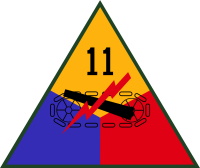
 continent. The US 6-AG was to halt its offensives and extend to the left to hold the southern half of US 3-A sector. The British 21-AG was to place its reserve corps, the British XXX Corps in the Brussels area to meet any thrust across the Meuse River.
continent. The US 6-AG was to halt its offensives and extend to the left to hold the southern half of US 3-A sector. The British 21-AG was to place its reserve corps, the British XXX Corps in the Brussels area to meet any thrust across the Meuse River.

 Meanwhile, the two German Infantry divisions the 18. and the 62., plus the Fuehrer Escort Brigade were dosing in on St Vith. The US 7-AD had gone into position north and east of the town to a point in the St Vith – Vielsalm highway near Petit Thier. An attack to relieve the two surrounded regiments of the 106-ID in the Schnee Eifel was halted by the westward pressure of the Germane. CCB 9-AD extended the line south. The 424-IR (106-ID-) and the 112-IR (28-ID) were being forced back toward St Vith. These two regiments, by December 19, extended the line south and west to form the U-shaped defense around the city.
Meanwhile, the two German Infantry divisions the 18. and the 62., plus the Fuehrer Escort Brigade were dosing in on St Vith. The US 7-AD had gone into position north and east of the town to a point in the St Vith – Vielsalm highway near Petit Thier. An attack to relieve the two surrounded regiments of the 106-ID in the Schnee Eifel was halted by the westward pressure of the Germane. CCB 9-AD extended the line south. The 424-IR (106-ID-) and the 112-IR (28-ID) were being forced back toward St Vith. These two regiments, by December 19, extended the line south and west to form the U-shaped defense around the city.











